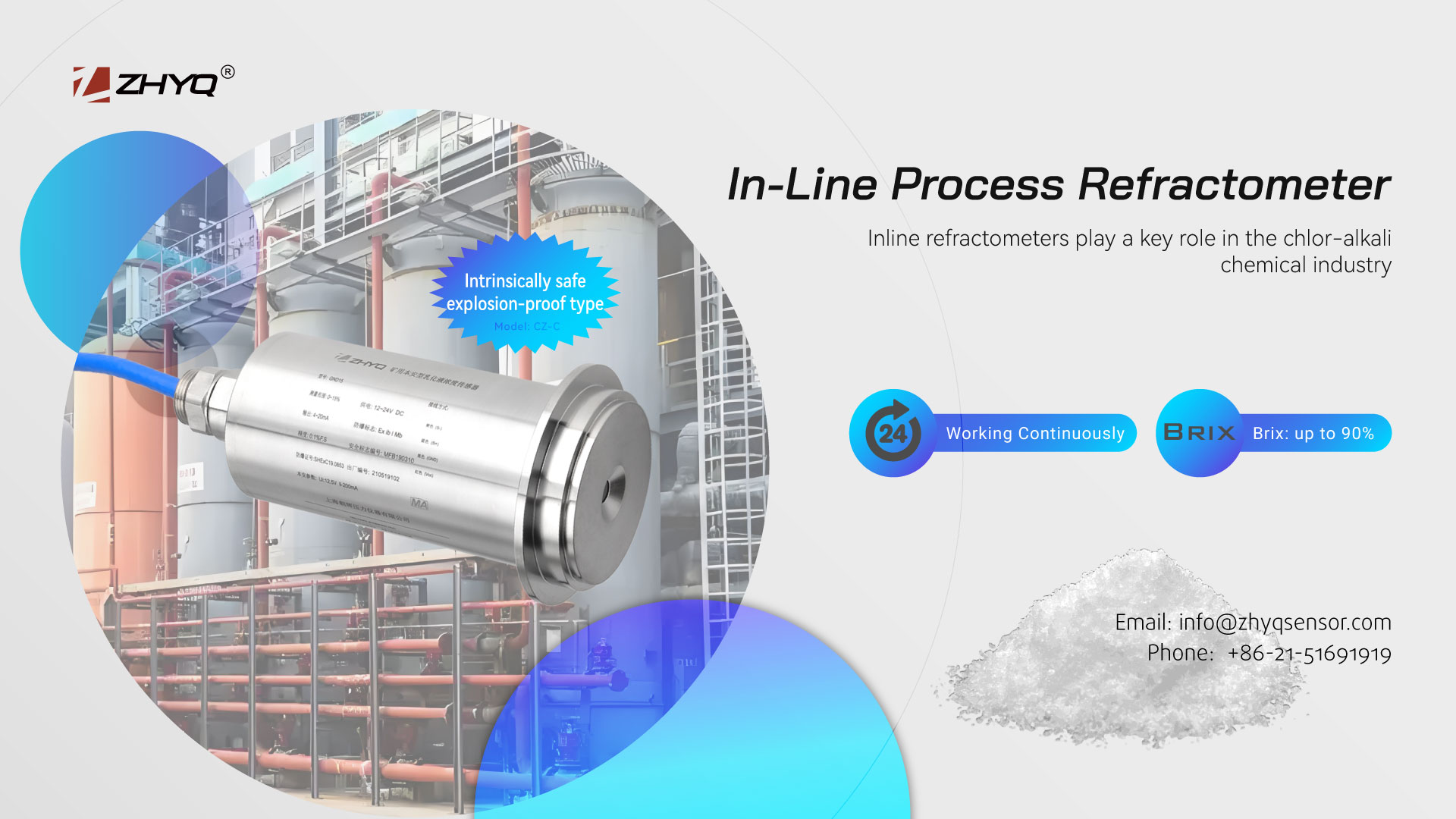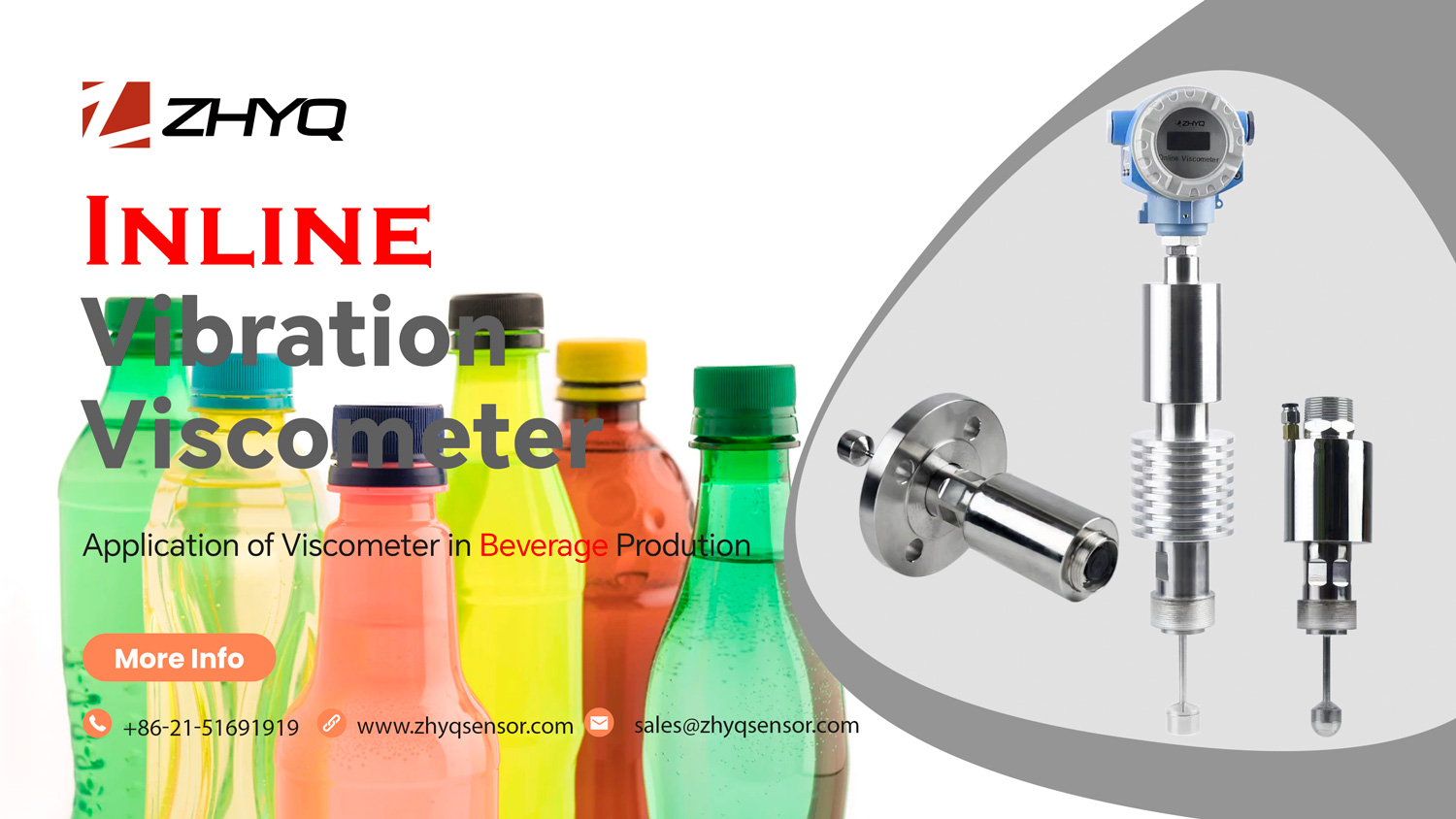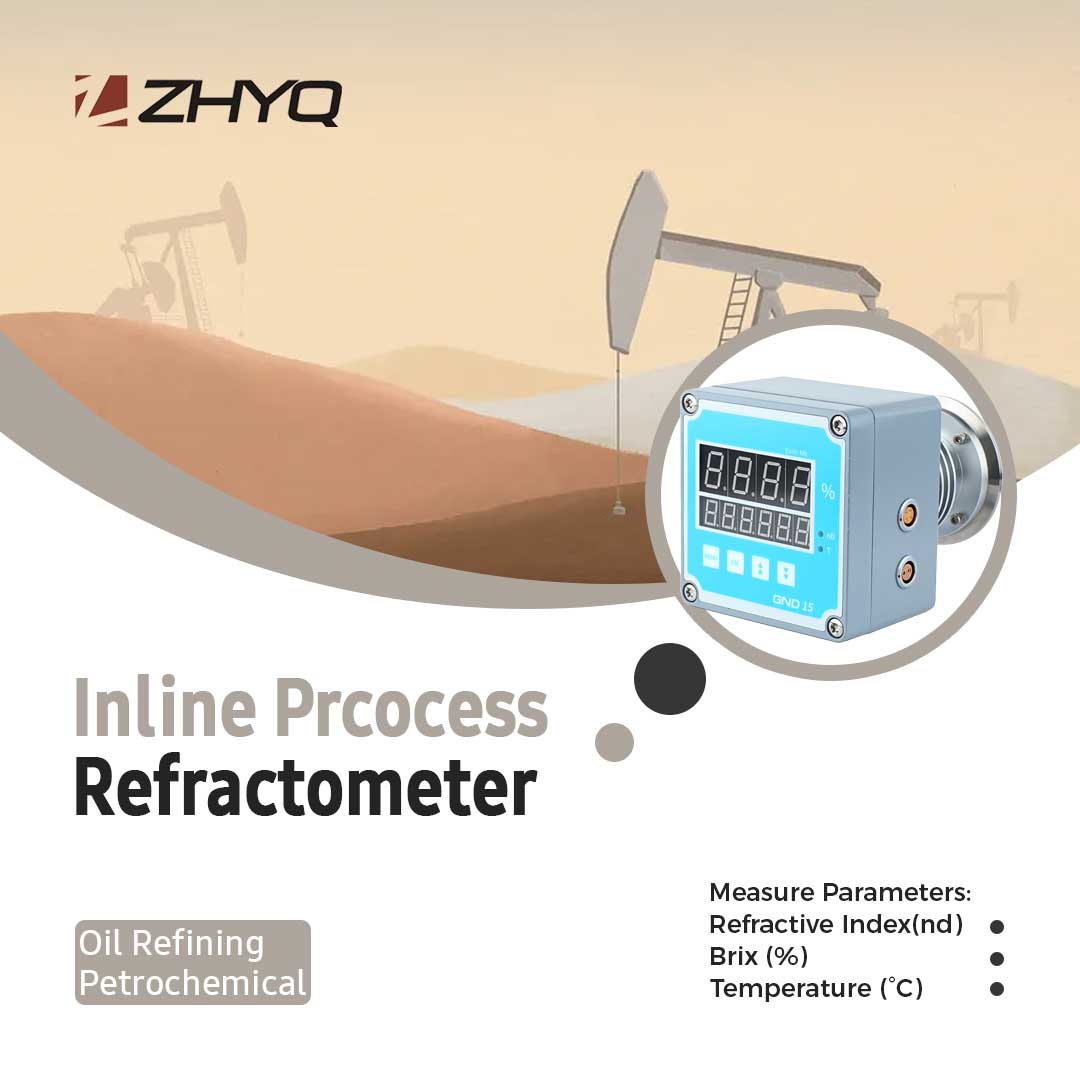
- Pressure Sensor, Pressure Transducer, Pressure Transmitter


- 2024-12-26
- Zhyq
- 113
Inline process refractometers play a key role in the chlor-alkali industry!
1. Brine refining process
1.1. Impurity monitoring and control: In chlor-alkali chemical industry, brine refining is the key first step. The brine formed after the raw salt is dissolved may contain impurity ions such as calcium and magnesium. Inline process refractometers can indirectly reflect the impurity content by monitoring the refractive index of the brine. Because the refractive index of pure brine and brine containing impurities is different, when the impurities increase, the refractive index will change. This helps to detect brine quality problems in time and prevent impurities from entering the electrolytic cell, thereby protecting the ion membrane and extending its service life.
1.2. Accurate concentration control: The concentration of brine is crucial to the efficiency of the electrolysis process and the quality of the product. Inline process refractometers can measure the concentration of brine in real time and accurately to ensure that it reaches saturation and the concentration is stable. For example, when using ion membrane electrolysis to produce caustic soda, the appropriate brine concentration can ensure a smooth electrolysis process, reduce energy consumption, and improve the efficiency of sodium hydroxide production.
2.Application in electrolysis process
2.1.Electrolyte composition monitoring: In the process of electrolyzing salt water to produce caustic soda, chlorine and hydrogen, the composition of the electrolyte will change continuously. The Inline process refractometer can monitor the changes in the concentration of sodium hydroxide solution and adjust the electrolysis conditions, such as current density and electrolysis time, in time. This is very important for ensuring product quality and improving electrolysis efficiency, for example, ensuring that the concentration of caustic soda produced meets industrial application standards.
2.2.Fault warning: If the electrolyzer is abnormal, such as membrane leakage or electrode damage, the composition and refractive index of the electrolyte will change abnormally. The Inline process refractometer can keenly capture these changes and issue alarms in time, allowing staff to take quick measures to avoid more serious production accidents and product quality problems.
3. Product quality control
3.1. Caustic soda quality detection: For the caustic soda products produced, the Inline process refractometer can quickly detect their concentration to ensure stable product quality. The concentration of caustic soda is an important quality indicator. Different industrial uses have different requirements for the concentration of caustic soda. Through real-time monitoring by the refractometer, it can be ensured that the product meets the corresponding quality standards. For example, the caustic soda used in the papermaking industry requires high purity and accurate concentration.
3.2. Chlorine and hydrogen purity monitoring (indirect): Although chlorine and hydrogen are gas products, their production is closely related to the state of the electrolyte. By monitoring the refractive index of the electrolyte (mainly sodium hydroxide solution), it is indirectly judged whether the electrolysis process is normal, thereby ensuring the purity of chlorine and hydrogen. The normal electrolysis process will produce high-purity chlorine and hydrogen. If there is a problem with the electrolysis process, the abnormal changes in the electrolyte monitored by the refractometer can be inferred that the quality of the gas product may be affected, so that measures can be taken in advance.
Leave Your Inquiry
Your email address will not be published. Required fields are marked *

